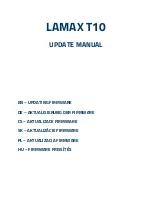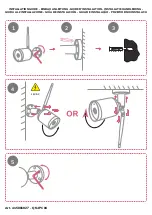
b y m i s c h a k o n i n g
kodak.3106.net >
index
manuals
information
T h e R e t i n a R e f l e x G u i d e
These web-pages have been scanned and converted from a photocopy
of the "Focal Press" publication "Retina Reflex Guide", 1970 edition.
There may be reference to "current" and "discontinued" models.
Obviously all Retina cameras are now long discontinued, but For ease of
editing if nothing else, all the original text has been retained.
The original book was divided into two sections, effectively an overview
and a "green pages" section covering specific models in more detail.
I've not bothered with a green background to these pages, but
hopefully I will have included links where appropriate to the relevant
text. Similarly, page-number references; as I've included each sub-
section of the book on one web-page, original page number references
have been linked to the new layout.
Table of Contents
The Retina Reflex
The Winding and Release Sequence
Retina Reflex Evolution
Handling the Retina Reflex
Handling, Winding and Trimming the Film
Films and Filters
Exposure
Using an Exposure Meter
Flash with the Retina Reflex
Using Alternative Lenses
The Retina Reflex IV
The Retina Reflex III
The Retina Reflex and Retina Reflex S
The Retina Reflex
Retina Reflex Lenses
Accessories
Facts, Figures and Tables
The Retina Reflex
The Retina Reflex is an eye-level 35 mm. reflex camera with interchangeable lenses for all general photography
as well as technical work, copying, photomicrography, stereo photography, etc. In many of these fields the
ground-glass screen is a distinct advantage. The camera takes normal 35 mm. perforated film and produces a
negative size 24x36 mm.(1 x 1½ in.).
The viewing system consists of a 45-degree mirror which throws the image formed by the lens on to a ground
glass screen on top of the camera. A pentaprism permits observation of this image -- which appears upright and
the right way round -- at eye-level.
The centre of the focusing screen is taken up by a pair of crossed wedges which are set in the screen and act as
a split image rangefinder.
For the exposure the mirror swings out of the way together with a light-tight capping plate in front of the film
aperture, thus leaving the way free for the lens to form its image on the film. This image exactly corresponds in
sharpness and field to the screen image which is absolutely free from parallax irrespective of the lens used.
In order to permit observation of the image, the shutter is open while the mirror is in the viewing position. On
pressing the release the shutter closes while the mirror and capping plate fold away, and then opens and closes
again to take the picture.


































